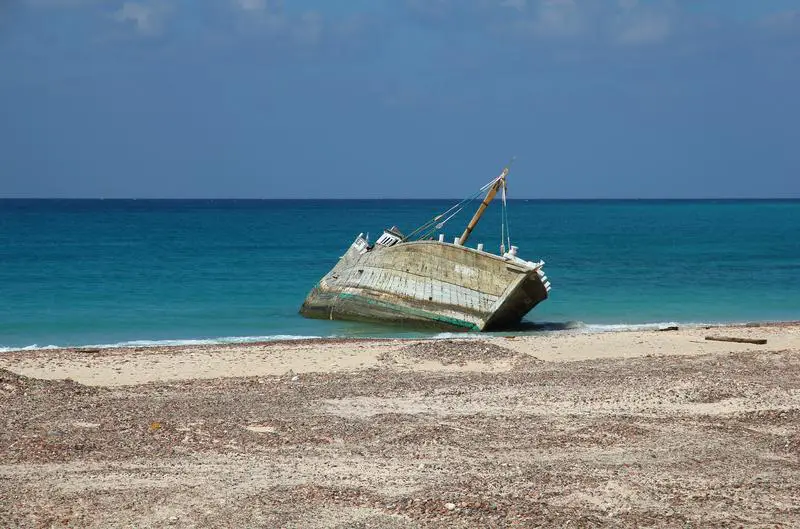At least 68 refugees and migrants died after a boat carrying 154 people capsized off the coast of Yemen on Sunday, with 74 others remaining missing, according to the International Organization for Migration (IOM).
The vessel, carrying mostly Ethiopian nationals, sank in the Gulf of Aden off Yemen’s southern province of Abyan early Sunday morning. Only 12 people survived the shipwreck, according to Abdusattor Esoev, head of the IOM in Yemen.
Rescue teams recovered the bodies of 54 refugees and migrants that washed ashore in the district of Khanfar, while 14 others were found dead at a different location and taken to a hospital morgue. Abdul Qader Bajamil, director of the health office in Zanzibar, indicated that authorities were making arrangements to bury the victims near the city of Shaqra while search operations continued amid difficult conditions.
The disaster occurred along one of the world’s most perilous migration routes. The waterways between Yemen and the Horn of Africa serve as a common but dangerous passage for refugees and migrants traveling in both directions. People attempting to reach Yemen are typically transported by smugglers on overcrowded boats across the Red Sea or the Gulf of Aden.
Despite Yemen’s ongoing humanitarian crisis and civil war, the country remains a major destination and transit point for migrants from East Africa. The Iran-backed Houthi group has controlled much of northwestern Yemen since 2014, when they ousted the internationally recognized government from the capital, Sanaa. A truce deal reached in April 2022 between Houthi rebels and government forces has led to a relative decrease in violence.
Many migrants from Ethiopia and Somalia attempt the dangerous crossing with the hope of reaching Saudi Arabia or other Gulf nations in search of work. The IOM reported that more than 60,000 refugees and migrants arrived in Yemen in 2024, marking a significant drop from the previous year’s total of 97,200.
The decreased numbers come amid increased patrols of the waters, according to an IOM report released in May. However, migrants arriving at response points in Yemen have reported that people-smugglers are becoming more reckless by knowingly sending boats into dangerous conditions to avoid patrols.
Esoev emphasized the importance of strengthening legal safeguards for migrants to prevent exploitation by smugglers. “What we are advocating for all member states… is to enhance their regular pathways,” he noted, suggesting that people should be able to take legal routes to migrate rather than being trapped by smugglers and taking dangerous journeys.
Yemen currently houses around 380,000 refugees and migrants. Many migrants end up stuck in the country, facing harsh conditions, abuse, or detention, according to previous IOM reports.
This latest tragedy follows a pattern of deadly incidents along the Horn of Africa-Yemen migration route. In March, two boats carrying more than 180 migrants sank off the coast of Yemen’s Dhubab district due to rough seas, with only two crew members rescued. In January, 20 Ethiopians were killed when their boat capsized off Yemen.
Since early 2025, the IOM has reported over 350 cases of migrant deaths and disappearances along the Eastern Route, though the real number is likely much higher. The agency has repeatedly warned about the dangers of the sea route between the Horn of Africa and Yemen, describing it as one of the busiest and most perilous mixed migration routes in the world.
Large-scale search and rescue operations were launched following Sunday’s capsizing, with authorities working to recover any additional bodies and search for possible survivors across a wide area of shoreline. The search operations continued late into the night as rescue teams scoured the waters off Abyan province.


